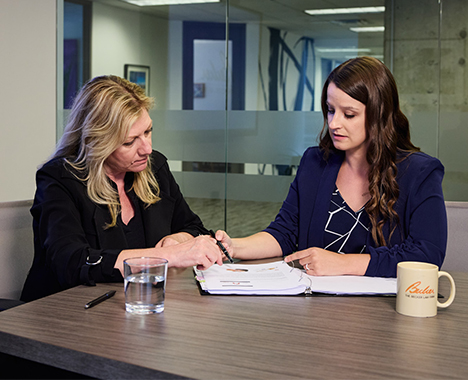There is likely no topic more controversial in the obstetric community than vaginal birth after cesarean (VBAC). Many people want to have a natural childbirth experience, which leads to them attempt a standard vaginal birth after prior cesarean section deliveries.
Likewise, many doctors are eager to avoid repeat cesarean sections in order to decrease the increasing cesarean section rate, now at approximately 31% (due to several factors, including medical advancements that allow us to save babies who are at risk). Traditionally, the most common indication for cesarean section is a prior cesarean section.
In fact, many women who have had a previous birth by C-section section can attempt a VBAC. A vaginal birth reduces the recovery time associated with a C-section. However, VBACs have risks of their own. If a physician fails to properly manage the risks associated with a VBAC and the mother or child is harmed because of the doctor’s error, the case should be evaluated for a possible medical malpractice claim.
The Ohio VBAC attorneys at The Becker Law Firm in Cleveland and Elyria, Ohio have gained significant settlements for clients injured in VBAC negligence cases. We offer a free initial consultation to discuss your case and advise you of your legal options.
Schedule your free case evaluation by calling our firm at 216-621-3000.
Why VBACs Are Risky
VBACs are risky because the woman’s uterus already has a scar on it from the previous C-section. The stresses of labor can cause the uterus to tear along the C-section scar. Called a uterine rupture, this is a medical emergency that places mother and child at risk.
The trials of labor after a previous cesarean are only recommended under certain circumstances. And, even when a mother elects to attempt a VBAC, obstetrical caregivers must recognize that there is a much lower threshold for intervention for a VBAC patient than for a woman who has never had a C-section. Doctors must pay careful attention to the fetal monitoring strips and be ready to order a C-section if there are indications of fetal distress.
A vaginal birth after cesarean section carries with it numerous risks. These include:
- Uterine rupture at the prior cesarean scar (0.5 to 1.5% of the time)
- Hysterectomy (removal of the uterus)
- Cesarean section (25% of VBAC attempts fail and require cesarean section)
- Uterine infection (more likely with a cesarean after a trial of labor)
- Lack of oxygen to the baby, causing developmental delays or cerebral palsy
- Wrongful death or stillbirth of the baby
Many women who want the natural childbirth experience find midwives who proclaim that VBAC is safe. In some cases, it is. However, some midwives are overeager to offer this type of delivery to their patients, despite being ill-equipped to deal with emergencies.
Women who trust midwives to deliver their babies with a VBAC should ensure that the delivery occurs close enough to a hospital in case an emergency cesarean delivery is necessary.
When Is a VBAC Safe?
There are very specific medical guidelines as to when vaginal birth after cesarean delivery can be performed. First, the patient and the physician must agree that it is safe. Second, the prior cesarean section must have been either a Kerr (low transverse incision) or Kronig (low vertical incision). Third, a VBAC is not usually permitted when the mother has diabetes, is carrying multiple babies, or has high blood pressure.
Most importantly, there should be staff on hand who are capable and ready to both monitor the condition of the baby before delivery and perform an emergency cesarean section.
Medical Provider Negligence in VBAC Cases
Some of the negligence that we prove in VBAC injury cases includes:
- Acceptance of patients: medical providers must know when patients are not proper candidates for VBAC and must not offer it to some patients.
- Informed consent: medical providers must adequately disclose the risks associated with VBAC.
- Failing to properly assess, diagnose and treat the condition of the mother when other signs indicate a cesarean delivery is necessary.
- Failing to ensure that the birth is accomplished in a hospital setting where emergency delivery of the infant can be timely accomplished.
- Failure of a hospital or birth center to adequately hire, train, credential, and/or supervise agents, servants, and employees.
- Failing to have in place and/or follow adequate policies and/or procedures regarding acceptance criteria for patients who desire VBAC.
- Failing to have in place adequate and appropriate policies and/or procedures regarding the acceptance of, care, and treatment of patients undergoing vaginal birth after cesarean section (VBAC).
- Failing to have in place and/or follow adequate policies and/or procedures regarding emergency delivery of babies.
- Failing to have in place and/or follow adequate policies and/or procedures regarding the electronic fetal monitoring.



